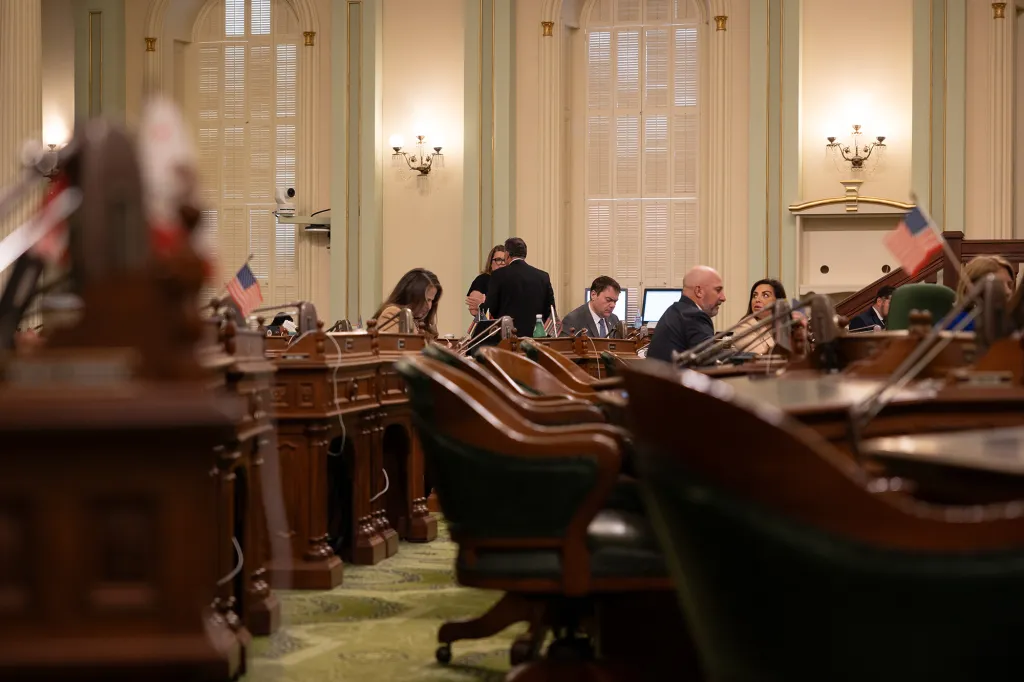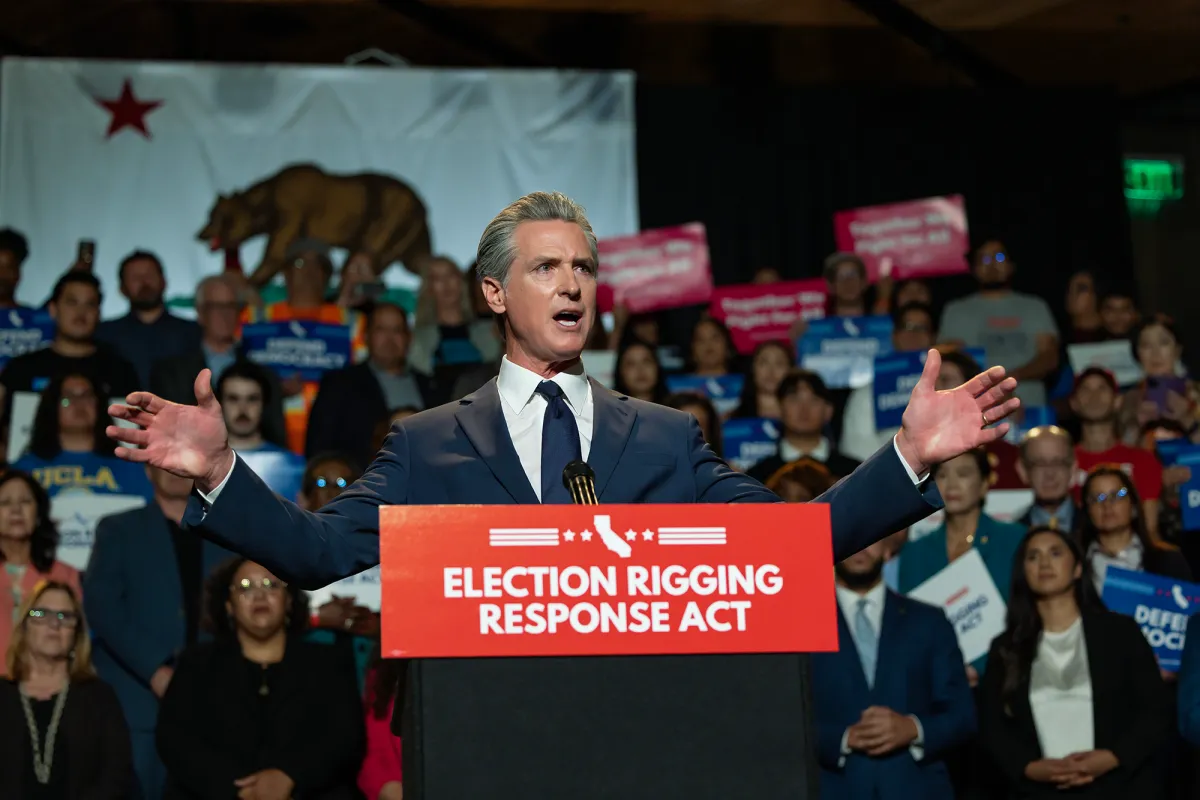The fight over redistricting is about to hit overdrive in California.
As the Legislature returns to Sacramento today for the final month of session, Democrats are racing to finish a plan that could tilt the state’s congressional map in their favor — and thrust California into another confrontation with President Donald Trump.
Republicans, who stand to lose more than half their seats in the state, decry the scheme as a self-serving power grab. But supporters, led by Gov. Gav Newsom, contend they are saving democracy by stopping Trump from rigging the outcome of the 2026 midterms.
Ultimately, California voters will likely decide in a special election this November.
Here’s what you need to know:
Wait, what is Newsom trying to do?
The governor is leading the charge for the Democratic response in a burgeoning partisan showdown that could effectively determine control of the U.S. House of Representatives before a single vote is cast next November.
This kicked off thousands of miles away from Sacramento — in Texas. Earlier this year, Trump began pressuring Republican leaders there to redraw its congressional lines to shore up the GOP’s narrow majority in the House. As his approval rating sinks, the president is worried Democrats could win back Congress in the 2026 election and disrupt the final two years of his term.
Even as dozens of Democratic members have fled the state in protest, the Texas Legislature is advancing a new map that could flip five Democratic House seats to Republican control. Other conservative states, including Ohio, Missouri, Indiana and Florida, are considering similar actions.
So, channeling the anger of Democratic voters, Newsom has launched California into a retaliatory redistricting that would offset the Texas map with five new Democratic-leaning seats.
“Donald Trump, you have poked the bear and we will punch back,” Newsom said during a rally last week formally kicking off the campaign. “Don’t mess with the great Golden State.”
How would it work?
It’s complicated!
Unlike Texas, where the Legislature determines congressional lines, California voters in 2010 gave that power to a bipartisan citizen commission. The commission draws a new map once each decade, after the U.S. Census, to ensure each congressional district has roughly an equal number of people. It last did so in 2021.
Newsom is proposing to temporarily override the commission and create districts more favorable to Democrats until after the 2030 Census. That requires going to the voters for their approval.
Democratic officials already drew a new map in secret, which they finally shared publicly on Friday. The Legislature, where three-quarters of members are Democrats, plans to vote before the end of this week to put that map on the ballot in a statewide special election on Nov. 4.
“Voters will see the maps and have the final say,” Assembly Speaker Robert Rivas, a Salinas Democrat, said in a statement.
Why the rush?
California’s primary election is in June, so work backwards from there. The deadline for candidates to declare is in early March. Those who want to collect signatures to qualify, instead of paying a filing fee, can start in December.
That means new congressional lines need to be in place by the end of the year, so candidates actually know which voters they need to reach.

Newsom is eyeing Nov. 4 for the special election to consolidate it with municipal elections across the state that day. State law requires elections officials to mail a ballot to every voter starting 29 days before the election, and to military and overseas voters 45 days before, which means ballots must be ready by late September.
The secretary of state’s office has said the Legislature must act by Friday to leave enough time for local elections officials to meet those deadlines for a Nov. 4 election. Even then, the next month will be extremely busy for them.
How much will this cost?
The state has promised to cover the expenses counties incur running this unexpected election, which won’t be cheap. The last state special election, an unsuccessful recall of Newsom in September 2021, cost about $200 million.
Newsom has said consolidating the election with already scheduled local elections on Nov. 4 could save money. But early estimates from counties — up to $4 million in Fresno and up to $16 million in Riverside — are higher than they were for the recall.
“No price tag for democracy,” Newsom told reporters last week following the kickoff rally.
Will this plan succeed?
Democrats feel good about their chances, but it’s a heavy lift.
A Politico poll found that nearly two-thirds of California voters prefer retaining the state’s independent redistricting commission over returning authority to the Legislature to draw congressional lines.
That is not exactly what Newsom’s plan would do, however. His messaging has emphasized that the commission would only be sidelined temporarily, because of what he calls a Trump-induced political emergency. It’s reflected in the name of the measure: the Election Rigging Response Act. Internal polling shared with lawmakers put support, when framed along those lines, at 52%.
While that’s enough to win in November, it may not be enough to withstand an intense campaign this fall that is expected to draw hundreds of millions of dollars in spending. Charles Munger, Jr., the longtime Republican donor who poured more than $12 million into the campaign to pass independent redistricting, has said he will open up his wallet again to defend it.
“Citizens, not politicians or partisan party insiders, should not only hold the power at the ballot box but also the power to draw the lines,” Amy Thoma Tan, a spokesperson for Munger’s campaign committee, said in a statement.
The National Republican Congressional Committee said in a statement that it was prepared to “fight Gavin Newsom’s illegal power grab in the courts and at the ballot box.”

